Pedro J. Moreno
Multi-Agent Interactive Question Generation Framework for Long Document Understanding
Jul 27, 2025Abstract:Document Understanding (DU) in long-contextual scenarios with complex layouts remains a significant challenge in vision-language research. Although Large Vision-Language Models (LVLMs) excel at short-context DU tasks, their performance declines in long-context settings. A key limitation is the scarcity of fine-grained training data, particularly for low-resource languages such as Arabic. Existing state-of-the-art techniques rely heavily on human annotation, which is costly and inefficient. We propose a fully automated, multi-agent interactive framework to generate long-context questions efficiently. Our approach efficiently generates high-quality single- and multi-page questions for extensive English and Arabic documents, covering hundreds of pages across diverse domains. This facilitates the development of LVLMs with enhanced long-context understanding ability. Experimental results in this work have shown that our generated English and Arabic questions (\textbf{AraEngLongBench}) are quite challenging to major open- and close-source LVLMs. The code and data proposed in this work can be found in https://github.com/wangk0b/Multi_Agentic_QA_Long_Doc.git. Sample Question and Answer (QA) pairs and structured system prompts can be found in the Appendix.
Trust the Model: Compact VLMs as In-Context Judges for Image-Text Data Quality
Jul 27, 2025Abstract:Vision-language models (VLMs) extend the conventional large language models by integrating visual data, enabling richer multimodal reasoning and significantly broadens the practical applications of AI. However, including visual inputs also brings new challenges in maintaining data quality. Empirical evidence consistently shows that carefully curated and representative training examples often yield superior results compared to simply increasing the quantity of data. Inspired by this observation, we introduce a streamlined data filtration framework that employs a compact VLM, fine-tuned on a high-quality image-caption annotated dataset. This model effectively evaluates and filters potential training samples based on caption and image quality and alignment. Unlike previous approaches, which typically add auxiliary filtration modules on top of existing full-scale VLMs, our method exclusively utilizes the inherent evaluative capability of a purpose-built small VLM. This strategy eliminates the need for extra modules and reduces training overhead. Our lightweight model efficiently filters out inaccurate, noisy web data, improving image-text alignment and caption linguistic fluency. Experimental results show that datasets underwent high-precision filtration using our compact VLM perform on par with, or even surpass, larger and noisier datasets gathered through high-volume web crawling. Thus, our method provides a lightweight yet robust solution for building high-quality vision-language training corpora. \\ \textbf{Availability and implementation:} Our compact VLM filtration model, training data, utility scripts, and Supplementary data (Appendices) are freely available at https://github.com/daulettoibazar/Compact_VLM_Filter.
Can DeepFake Speech be Reliably Detected?
Oct 09, 2024



Abstract:Recent advances in text-to-speech (TTS) systems, particularly those with voice cloning capabilities, have made voice impersonation readily accessible, raising ethical and legal concerns due to potential misuse for malicious activities like misinformation campaigns and fraud. While synthetic speech detectors (SSDs) exist to combat this, they are vulnerable to ``test domain shift", exhibiting decreased performance when audio is altered through transcoding, playback, or background noise. This vulnerability is further exacerbated by deliberate manipulation of synthetic speech aimed at deceiving detectors. This work presents the first systematic study of such active malicious attacks against state-of-the-art open-source SSDs. White-box attacks, black-box attacks, and their transferability are studied from both attack effectiveness and stealthiness, using both hardcoded metrics and human ratings. The results highlight the urgent need for more robust detection methods in the face of evolving adversarial threats.
Extreme Encoder Output Frame Rate Reduction: Improving Computational Latencies of Large End-to-End Models
Feb 27, 2024Abstract:The accuracy of end-to-end (E2E) automatic speech recognition (ASR) models continues to improve as they are scaled to larger sizes, with some now reaching billions of parameters. Widespread deployment and adoption of these models, however, requires computationally efficient strategies for decoding. In the present work, we study one such strategy: applying multiple frame reduction layers in the encoder to compress encoder outputs into a small number of output frames. While similar techniques have been investigated in previous work, we achieve dramatically more reduction than has previously been demonstrated through the use of multiple funnel reduction layers. Through ablations, we study the impact of various architectural choices in the encoder to identify the most effective strategies. We demonstrate that we can generate one encoder output frame for every 2.56 sec of input speech, without significantly affecting word error rate on a large-scale voice search task, while improving encoder and decoder latencies by 48% and 92% respectively, relative to a strong but computationally expensive baseline.
Large-scale Language Model Rescoring on Long-form Data
Jun 13, 2023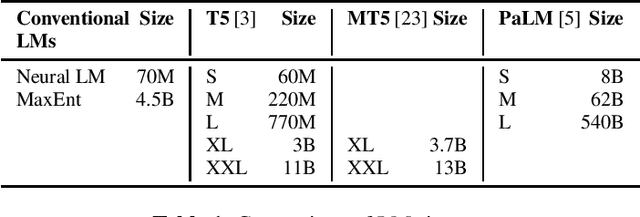

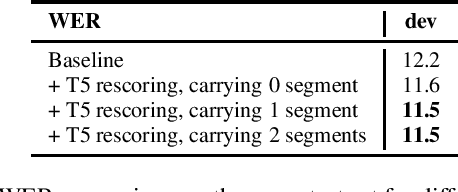
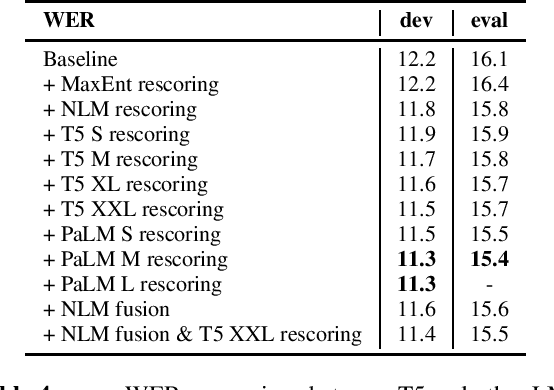
Abstract:In this work, we study the impact of Large-scale Language Models (LLM) on Automated Speech Recognition (ASR) of YouTube videos, which we use as a source for long-form ASR. We demonstrate up to 8\% relative reduction in Word Error Eate (WER) on US English (en-us) and code-switched Indian English (en-in) long-form ASR test sets and a reduction of up to 30\% relative on Salient Term Error Rate (STER) over a strong first-pass baseline that uses a maximum-entropy based language model. Improved lattice processing that results in a lattice with a proper (non-tree) digraph topology and carrying context from the 1-best hypothesis of the previous segment(s) results in significant wins in rescoring with LLMs. We also find that the gains in performance from the combination of LLMs trained on vast quantities of available data (such as C4) and conventional neural LMs is additive and significantly outperforms a strong first-pass baseline with a maximum entropy LM.
* 5 pages, accepted in ICASSP 2023
Modular Hybrid Autoregressive Transducer
Oct 31, 2022Abstract:Text-only adaptation of a transducer model remains challenging for end-to-end speech recognition since the transducer has no clearly separated acoustic model (AM), language model (LM) or blank model. In this work, we propose a modular hybrid autoregressive transducer (MHAT) that has structurally separated label and blank decoders to predict label and blank distributions, respectively, along with a shared acoustic encoder. The encoder and label decoder outputs are directly projected to AM and internal LM scores and then added to compute label posteriors. We train MHAT with an internal LM loss and a HAT loss to ensure that its internal LM becomes a standalone neural LM that can be effectively adapted to text. Moreover, text adaptation of MHAT fosters a much better LM fusion than internal LM subtraction-based methods. On Google's large-scale production data, a multi-domain MHAT adapted with 100B sentences achieves relative WER reductions of up to 12.4% without LM fusion and 21.5% with LM fusion from 400K-hour trained HAT.
* 8 pages, 1 figure, SLT 2022
G-Augment: Searching For The Meta-Structure Of Data Augmentation Policies For ASR
Oct 19, 2022
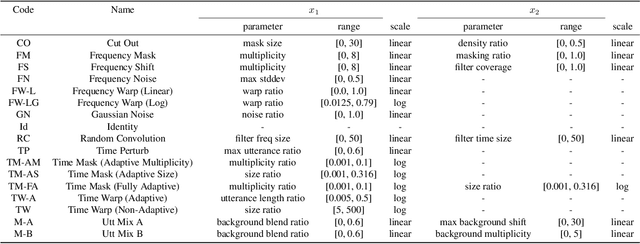
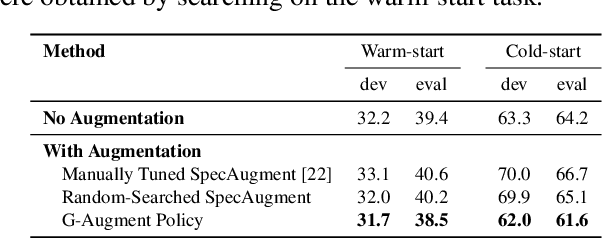
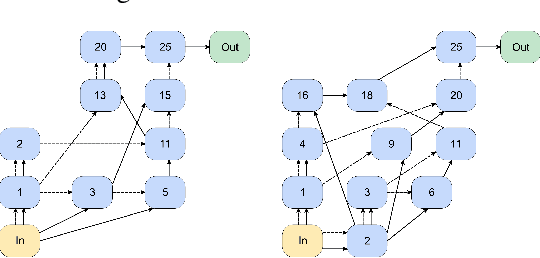
Abstract:Data augmentation is a ubiquitous technique used to provide robustness to automatic speech recognition (ASR) training. However, even as so much of the ASR training process has become automated and more "end-to-end", the data augmentation policy (what augmentation functions to use, and how to apply them) remains hand-crafted. We present Graph-Augment, a technique to define the augmentation space as directed acyclic graphs (DAGs) and search over this space to optimize the augmentation policy itself. We show that given the same computational budget, policies produced by G-Augment are able to perform better than SpecAugment policies obtained by random search on fine-tuning tasks on CHiME-6 and AMI. G-Augment is also able to establish a new state-of-the-art ASR performance on the CHiME-6 evaluation set (30.7% WER). We further demonstrate that G-Augment policies show better transfer properties across warm-start to cold-start training and model size compared to random-searched SpecAugment policies.
Analysis of Self-Attention Head Diversity for Conformer-based Automatic Speech Recognition
Sep 13, 2022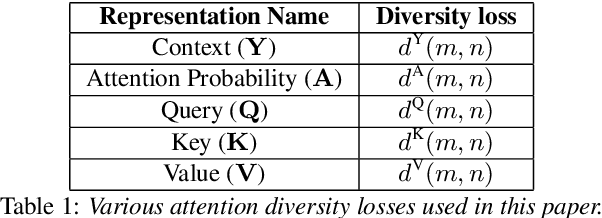
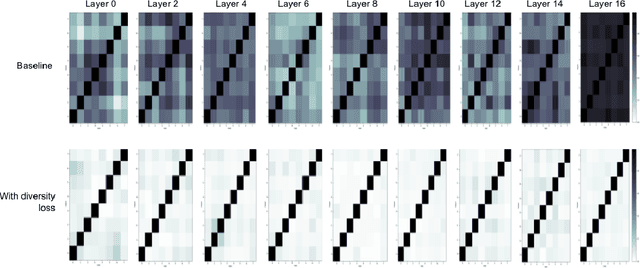
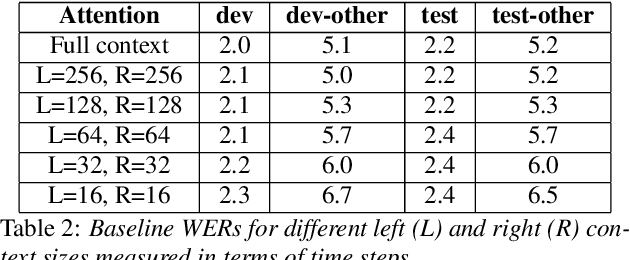
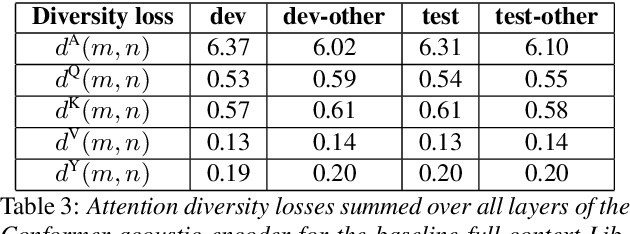
Abstract:Attention layers are an integral part of modern end-to-end automatic speech recognition systems, for instance as part of the Transformer or Conformer architecture. Attention is typically multi-headed, where each head has an independent set of learned parameters and operates on the same input feature sequence. The output of multi-headed attention is a fusion of the outputs from the individual heads. We empirically analyze the diversity between representations produced by the different attention heads and demonstrate that the heads become highly correlated during the course of training. We investigate a few approaches to increasing attention head diversity, including using different attention mechanisms for each head and auxiliary training loss functions to promote head diversity. We show that introducing diversity-promoting auxiliary loss functions during training is a more effective approach, and obtain WER improvements of up to 6% relative on the Librispeech corpus. Finally, we draw a connection between the diversity of attention heads and the similarity of the gradients of head parameters.
A Scalable Model Specialization Framework for Training and Inference using Submodels and its Application to Speech Model Personalization
Mar 23, 2022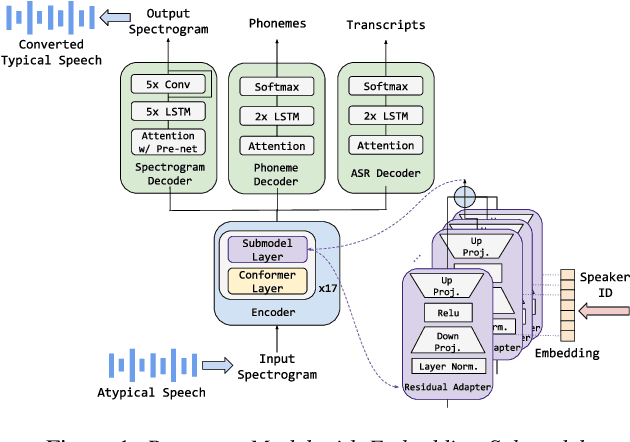
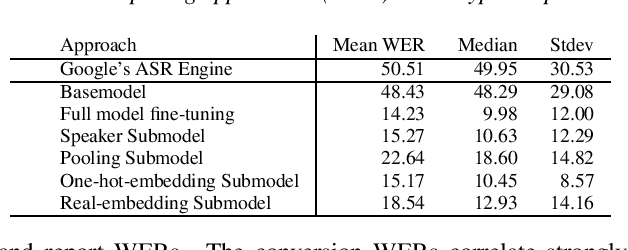
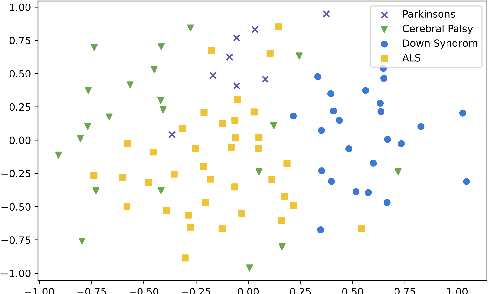
Abstract:Model fine-tuning and adaptation have become a common approach for model specialization for downstream tasks or domains. Fine-tuning the entire model or a subset of the parameters using light-weight adaptation has shown considerable success across different specialization tasks. Fine-tuning a model for a large number of domains typically requires starting a new training job for every domain posing scaling limitations. Once these models are trained, deploying them also poses significant scalability challenges for inference for real-time applications. In this paper, building upon prior light-weight adaptation techniques, we propose a modular framework that enables us to substantially improve scalability for model training and inference. We introduce Submodels that can be quickly and dynamically loaded for on-the-fly inference. We also propose multiple approaches for training those Submodels in parallel using an embedding space in the same training job. We test our framework on an extreme use-case which is speech model personalization for atypical speech, requiring a Submodel for each user. We obtain 128x Submodel throughput with a fixed computation budget without a loss of accuracy. We also show that learning a speaker-embedding space can scale further and reduce the amount of personalization training data required per speaker.
 Add to Chrome
Add to Chrome Add to Firefox
Add to Firefox Add to Edge
Add to Edge